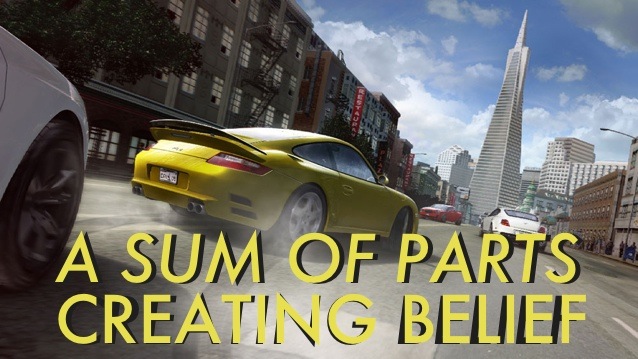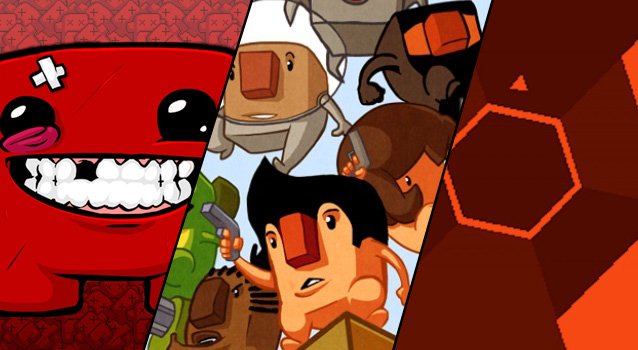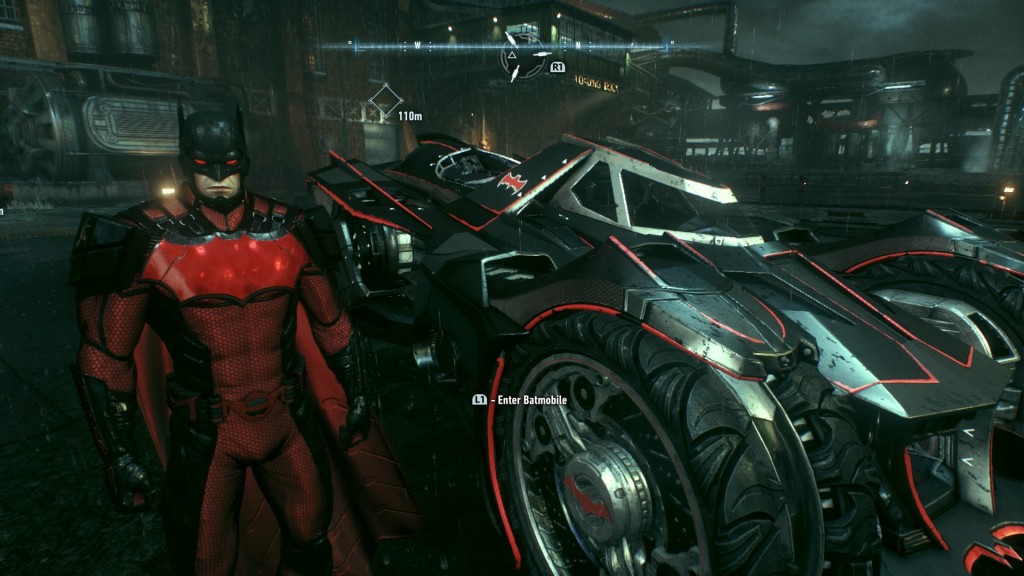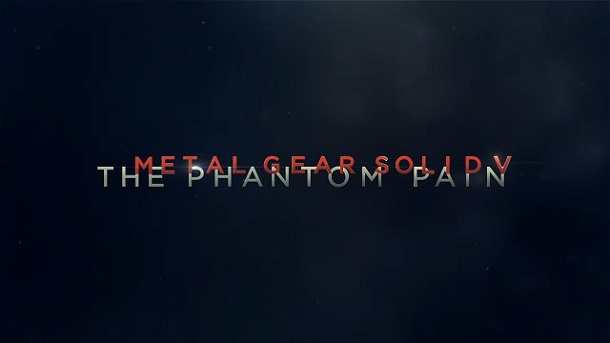


When we talk about fantastical stories, we often talk about the suspension of disbelief. That is, how much slack the audience is willing to give the story before they say “No, I’m not buying that. It’s just too implausible.” It’s like an elastic band that the storyteller has to stretch as far as humanly possible without actually snapping it in the audience’s face.
The storyteller does get some help from us, though. Generally speaking, we want to accept the story we are being told. That’s why we suspend our disbelief in the first place; we don’t want our cynical brain getting between us and a good story.
In videogames, though, suspension of disbelief isn’t quite really what is happening. As we move around these worlds, we are able to interrogate their nooks and crannies; we can test them; we can pick up that rubber band and rip it in half if we want.
And, the thing is, no videogame ever has really been completely ‘realistic’ or made complete ‘sense’. Even in the most open, diegetic games, there is always something that will remind us of its own unreality if we look hard enough.
Janet H Murray in her 1997 book Hamlet on the Holodeck talks about this phenomena, but in a far more positive and constructive sense. She notes that in videogames and other digital media that the idea of suspending disbelief doesn’t quite fit onto what we actually do. Instead, what Murray claims we do is actively create belief. “Because of our desire to experience immersion,” she says, “we focus our attention on the enveloping world and we use our intelligence to reinforce rather than to question the reality of the experience.”
Generally speaking, we want to accept the story we are being told. That’s why we suspend our disbelief in the first place; we don’t want our cynical brain getting between us and a good story.In other words, when we play a videogame, we make it make sense in order to feel that sense of ‘immersion’ or whatever you wish to call it. It’s this actively creating belief that keeps us from questioning why these ten doors are painted onto the wall but that one actually opens; that makes us not think twice about the fact our health automatically recharges; that means we don’t even really notice that Vice Ciy, Liberty City, and the entire state of San Andreas are isolated islands floating on an ocean. We want to feel immersed, so we make the worlds of our games make sense.
It’s not unlike what we do when we go to a live play at the theatre. Every scene might take place on the same wooden stage, but we as the audience use hints in the script to actively create our belief of that stage as a forest or a castle or a river. Likewise, we might see the same actor popping up as three different characters throughout the show, but we are able to actively construct each of them as a different person, for the sake of the narrative.
Of course, it doesn’t always work, and everyone has their own limits on just how much belief they are willing to create. The earlier examples are all within my personal limits of what belief I am willing to construct, but when it comes to Skyrim’s invisible walls at the edges of its world, that goes beyond any amount belief I can produce. It completely breaks down the sense of the world and I remember I am just playing a videogame. If instead of an invisible wall there was a closed gate, on the other hand, maybe I would’ve bought it. But still, all of us are able to actively construct belief to some extent in order to enjoy the videogames we enjoy. When we no longer can, the rubber band snaps and rudely awakes us from the experience.
It is in this context that I feel Driver: San Francisco is most successful. Either by accident or by design, the game taps into our subconscious instinct to make a world make sense, and it harnesses that to both make Tanner’s dream world more coherent and, at the same time, to make us double guess that coherency as a figment of our own imagination.
It works, like everything in Driver SF, through a series of layers, where the player’s own subconscious methods of constructing belief are reflected through Tanner’s. Just as we actively construct our belief in the reality of the fictional worlds we visit in games, Tanner actively constructs his own world, building an entire city in his head, piecing it together from memories and dreams to create his own world.
On top of this is the player’s active knowledge that this is all in Tanner’s dream, so anything is possible. If something doesn’t make sense (the ability to shift, the fact Tanner can’t leave his car, the fact that so few missions are actually in anyway rational) we can just shrug it off with “Well, it is just a dream.” Really, in a sense, Driver SF makes it easier on the player. We don’t have to work as hard to actively construct the reality of this world as we do in most games because Tanner is doing it for us.
But towards the end of the game, Tanner’s hold on his reality slowly breaks down and the holes start to tear wider in its fabric. Just as the reality of Skyrim’s world broke down for me as I walked into that invisible wall, the same happens to Tanner when, among other things, he too hits an invisible wall at the edge of his world. It gets harder and harder for Tanner to hold his world together as the reality that it is not a reality at all starts to sink in.
But as Tanner loses his grip, our natural instinct as players to construct belief jumps in. The less hold Tanner has on his world, the more desperately we as players grip onto it, trying to keep it all together.
It gets to a point where I start to double guessing things. Something will happen that will cause me to do a double take and I will wonder if it happened in the game or in my own head, whether it was a figment of Tanner’s imagination or my own.
One example is the two Japanese street racing kids Tanner returns to several times throughout the game. The one Tanner possesses is named Jun. In one of the final races, the other kid says something along the lines of, “Great racing, John!” and Tanner says “What did you say?!” and the kid, confused, says “Uh, ‘Great racing, Jun’.” As though that was what he had always said. I was so confused. Had he actually said John the first time? Was the game trying to trick me, or was I trying to trick myself?
These double-takes happened more and more as the game progressed. At other times I would shift into random cars where someone would apparently see me as me, Tanner, and I wouldn’t notice what they were saying was special until I had already shifted out. I would go back, but by then it was too late, they were back to normal.
Driver SF is not the only game that exploits our instinctive nature to make a world make sense. Dear Esther’s barely-glimpsed ghosts and its poltergeistial game design that sees items randomly moved around the world makes each play more surreal than the last as the world presented doesn’t match up with the world your mind says should be there.
The parallels between Tanner’s experience of his dreamworld and our experiences of gameworlds generally has been a running theme in these essays this month. It is, ultimately, what I find so magnificent and intriguing about Driver SF—through Tanner, I have learned things about myself and how I engage with videogames. As Tanner begins to finally question the reality of his dreams, I an frantically trying to keep it together, like I am in some kind of subconscious denial. Tanner isn’t the only one refusing to wake up.




 Ultimate Tips and Tricks To Survive Realistic Mode In Call of Duty: Black Ops III
Ultimate Tips and Tricks To Survive Realistic Mode In Call of Duty: Black Ops III The Witcher 3: Wild Hunt Guide On Where To Find All The Saddlebags
The Witcher 3: Wild Hunt Guide On Where To Find All The Saddlebags Destiny TTK: Path of the Bladedancer and Gunslinger Hunter Subclass Quest Guide
Destiny TTK: Path of the Bladedancer and Gunslinger Hunter Subclass Quest Guide Top UNSC, Covenant and Forerunner Vehicles In Halo 5: Guardians
Top UNSC, Covenant and Forerunner Vehicles In Halo 5: Guardians MGSV Guide: Here's How To Stop Quiet From Leaving
MGSV Guide: Here's How To Stop Quiet From Leaving